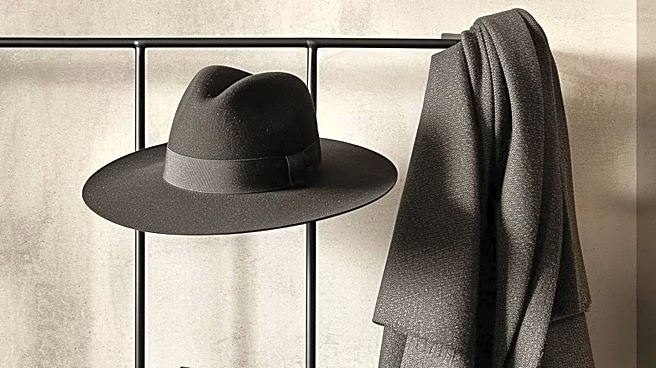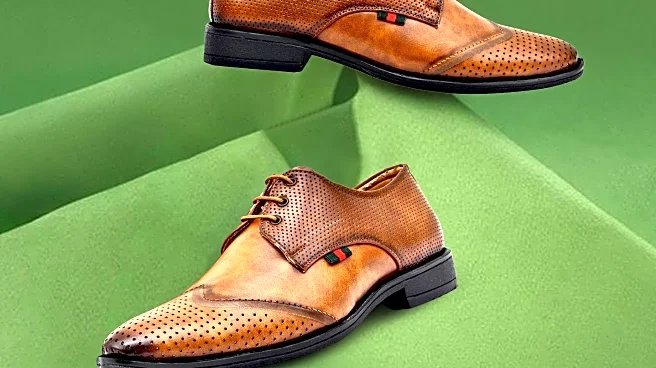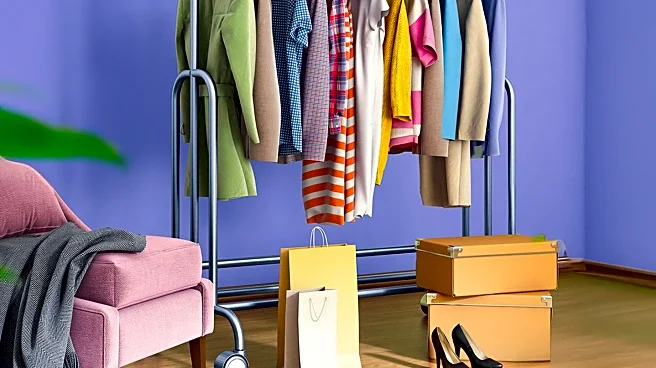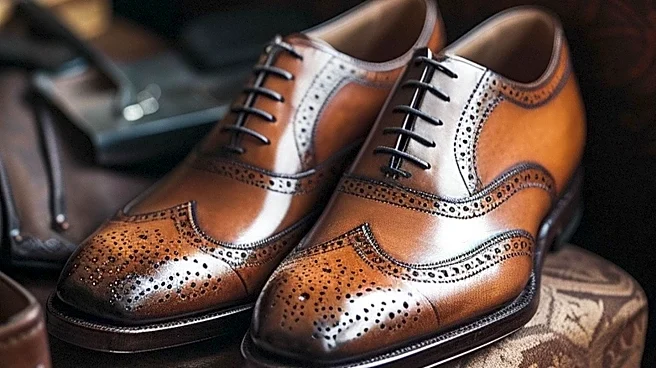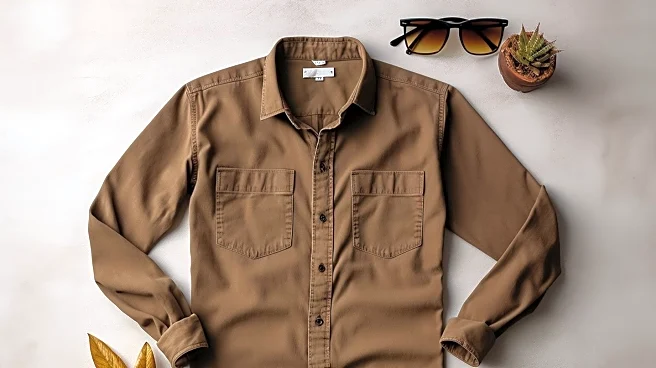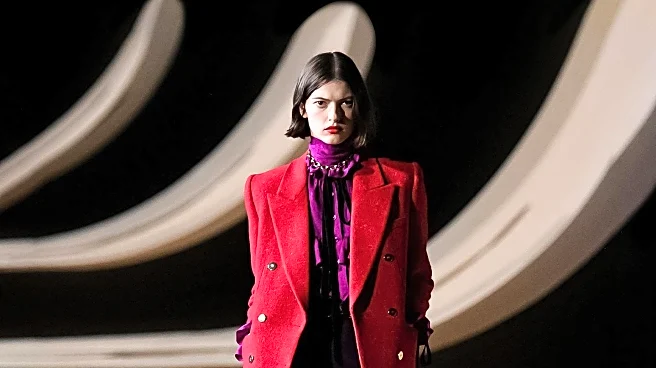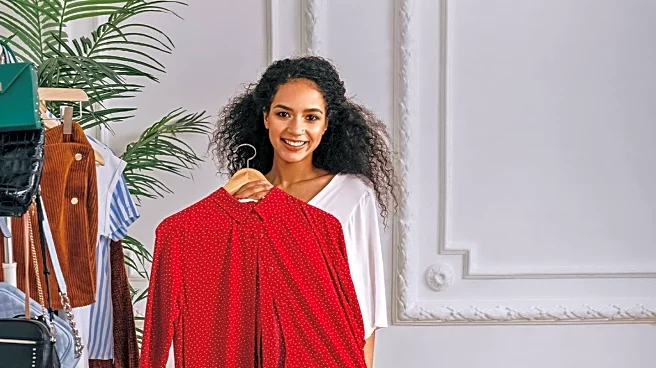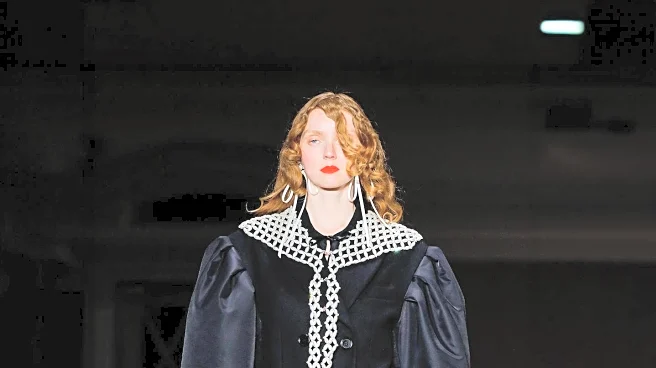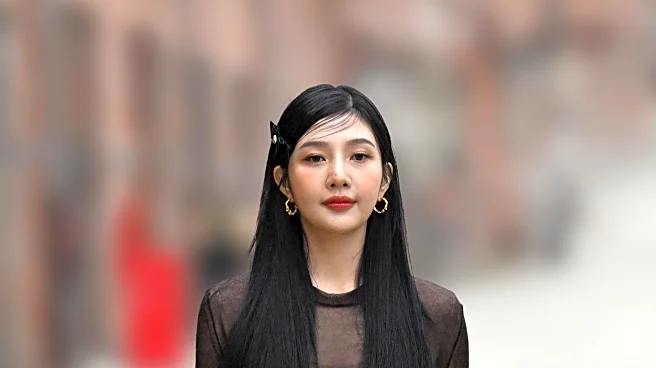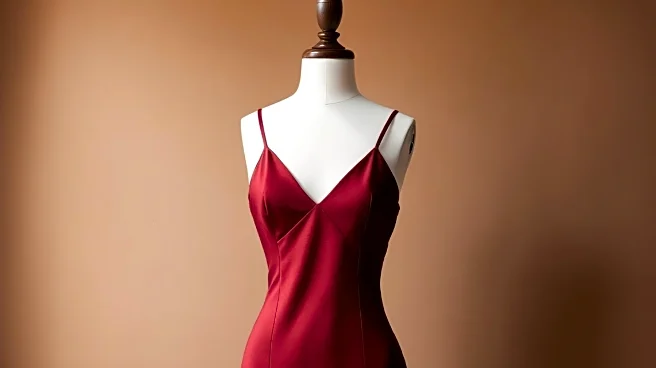What is the story about?
What's Happening?
The fashion industry is witnessing a resurgence of interest in Savile Row shoes, particularly derbies and brogues, as highlighted in recent runway shows. Designers and street style icons are showcasing innovative ways to style these classic menswear staples for women. The distinction between derbies, oxfords, and brogues lies in their lacing systems and decorative perforations. This season, designers like Victoria Beckham and Calvin Klein have paired shiny derbies with slinky dresses and menswear-inspired separates, while Michael Kors and Bally have added treaded soles and extra buckles to toughen up the look. The trend is also evident in Michael Rider's debut Celine show, where models wore slim, gym shoe-like versions in leather.
Why It's Important?
The renewed focus on Savile Row shoes signifies a shift in fashion towards classic, versatile footwear that can be styled in various ways. This trend offers consumers a chance to invest in timeless pieces that can be adapted for different occasions, from office attire to casual weekend wear. The emphasis on derbies and brogues reflects a broader movement towards gender-neutral fashion, allowing women to incorporate traditionally masculine elements into their wardrobes. This could lead to increased sales for brands that offer these styles, as consumers seek to diversify their shoe collections with pieces that offer both style and functionality.
What's Next?
As the trend gains momentum, fashion brands may expand their offerings of derbies and brogues, introducing new designs and materials to cater to diverse consumer preferences. Retailers might also focus on marketing these shoes as versatile staples that can be dressed up or down, appealing to a wide range of customers. Additionally, fashion influencers and stylists could play a significant role in promoting creative ways to incorporate these shoes into everyday outfits, further driving consumer interest and sales.
Beyond the Headlines
The trend towards Savile Row shoes may also influence broader fashion industry practices, encouraging designers to explore more sustainable and durable materials for footwear production. This could lead to a shift in consumer behavior, with individuals prioritizing quality and longevity over fast fashion. Furthermore, the embrace of gender-neutral styles could contribute to a more inclusive fashion landscape, challenging traditional norms and expanding the range of options available to consumers.
AI Generated Content
Do you find this article useful?
